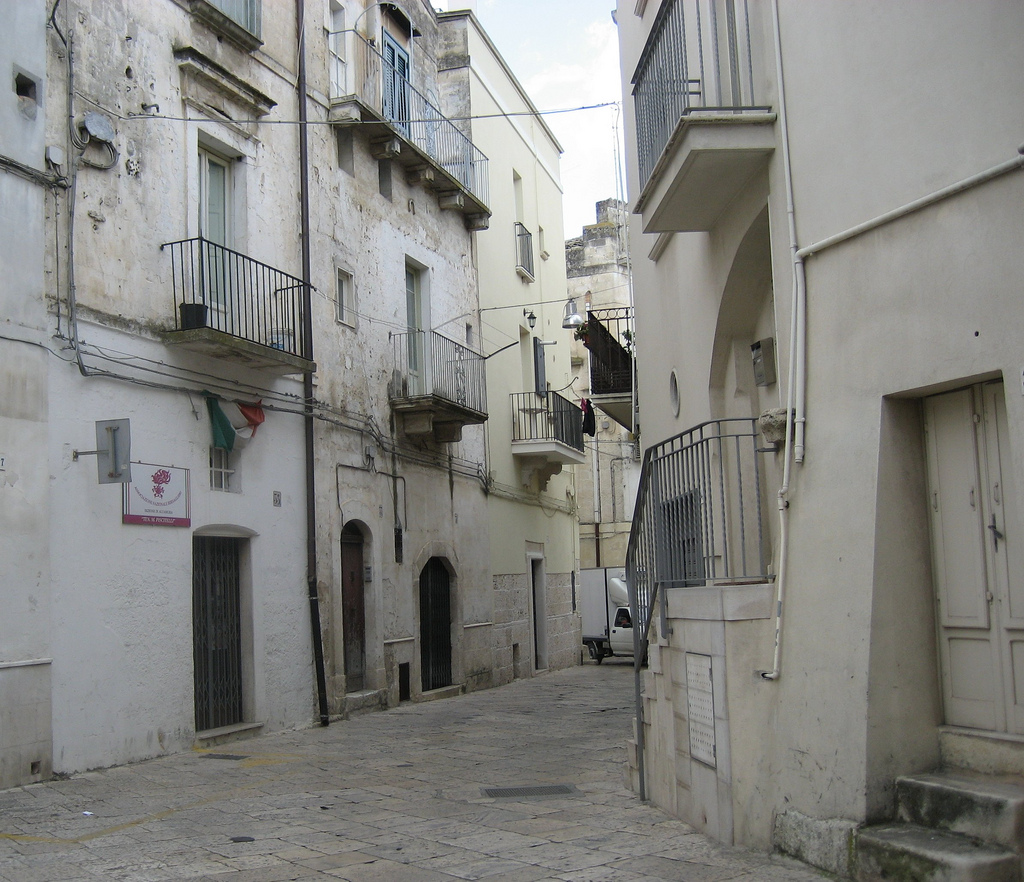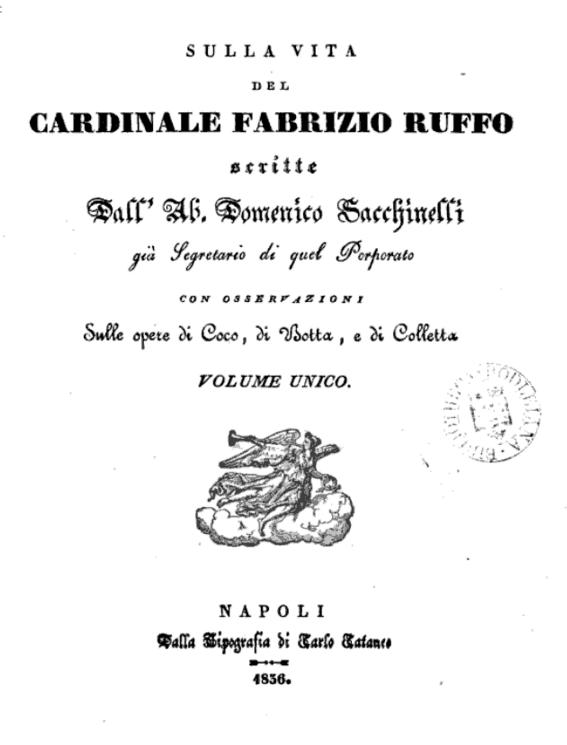|
Porta Matera
Porta Matera was one of the main gates of the old city of Altamura. They were part of the City Walls of Altamura (dating back to Middle Ages and rebuilt in 1648), which were completely demolished during the nineteenth century since they had become useless for defence purposes. The gate itself was demolished in 1872. The monastery ''Monastero del Soccorso'' is located on the left side of the gate, while on the right some ruins of the City Walls of Altamura, city walls can be seen, presumably saved from destruction because of the bas-relief depicting "Giovanni Pipino di Altamura, Pipino's leg" (relating to the killing and subsequent dismemberment of Giovanni Pipino di Altamura in the Middle Ages). In the past, it was known as ''porta montium'', which is Latin and it means "the gate that leads to the mountains" of Italian region Basilicata. Nowadays, the gate is known mostly because of the Altamuran Revolution (1799). Pipino's leg Some ruins of the medieval city walls of Altamura ... [...More Info...] [...Related Items...] OR: [Wikipedia] [Google] [Baidu] |
Middle Ages
In the history of Europe, the Middle Ages or medieval period lasted approximately from the late 5th to the late 15th centuries, similar to the post-classical period of global history. It began with the fall of the Western Roman Empire and transitioned into the Renaissance and the Age of Discovery. The Middle Ages is the middle period of the three traditional divisions of Western history: classical antiquity, the medieval period, and the modern period. The medieval period is itself subdivided into the Early, High, and Late Middle Ages. Population decline, counterurbanisation, the collapse of centralized authority, invasions, and mass migrations of tribes, which had begun in late antiquity, continued into the Early Middle Ages. The large-scale movements of the Migration Period, including various Germanic peoples, formed new kingdoms in what remained of the Western Roman Empire. In the 7th century, North Africa and the Middle East—most recently part of the Eastern Ro ... [...More Info...] [...Related Items...] OR: [Wikipedia] [Google] [Baidu] |
Altamura Dipinto Particolare Porta Matera
Altamura (, ; nap, label= Barese, Ialtamùre) is a town and ''comune'' of Apulia, in southern Italy. It is located on one of the hills of the Murge plateau in the Metropolitan City of Bari, southwest of Bari, close to the border with Basilicata. , its population amounts to 70,595 inhabitants. The city is known for its particular quality of bread called Pane di Altamura, which is sold in numerous other Italian cities. The 130,000-year-old calcified Altamura Man was discovered in 1993 in the nearby limestone cave called ''grotta di Lamalunga''. History The area of modern Altamura was densely inhabited in the Bronze Age (La Croce settlement and necropolis). The region contains some fifty tumuli. Between the 6th and the 3rd century BC a massive line of megalithic walls was erected, traces of which are still visible in some areas of the city. Ancient city The city was inhabited until around the tenth century AD. Then it was reportedly looted by Saracens. There are no reliab ... [...More Info...] [...Related Items...] OR: [Wikipedia] [Google] [Baidu] |
Ottavio Serena
Ottavio Serena (18 August 1837 – 7 January 1914) was an Italian politician, judge, prefect and historian. He is known in his hometown Altamura for his works about local history, such as the Altamuran Revolution (1799). His contribution and the testimonies he collected allowed to shed light on some historical events (such as the killing of Giovanni Firrao (1799) and on legendary toponyms (''Petilia and Altilia''). Moreover, he was one of the promoters of the construction of ''Acquedotto pugliese'' ("Apulia waterworks"), which he considered essential for the development of Italian region Apulia. Life Ottavio Serena was born in Altamura on 18 August 1837 from a noble local family. The Serena family is supposed to have originated from Monte Sant'Angelo, but they later moved to Foggia. The family owned the fiefdom of ''Lapigio'' as early as 1407 with full control over the vassals and with full jurisdiction, as shown on a diploma by queen Joanna II of Naples. araldo1898-21, p. 22 ... [...More Info...] [...Related Items...] OR: [Wikipedia] [Google] [Baidu] |
Domenico Sacchinelli
Domenico Sacchinelli (18 April 1766 - 6 July 1844) was an abbot of the Catholic church. He is best known for having followed and helped Fabrizio Ruffo and the '' Sanfedisti'' army to restore the Kingdom of Naples and the Bourbon dynasty, after the short-lived Parthenopean Republic (1799). In 1836, after a few decades, he published his memoirs of that period, titled ''Memorie storiche sulla vita del cardinale Fabrizio Ruffo''. Life Domenico Sacchinelli was born in Pizzoni, Calabria (Italy), from Francesco Sacchinelli and Serafina Conciatore,Govanni Pititto, Archivio Storico della Calabria - Nuova Serie - Anno I. Numero 1, Nota n.36. Luigi Pellegrini Editore. Cosenza -201/ref> who decided to give him a good education; they also wanted him to become a monk. Nonetheless, when he was just 18 years old, he decided to leave his hometown in order to get a job as a scribe in the city of Catanzaro, inside the '' Cassa sacra''; this was an institution founded by king Ferdinand I of the ... [...More Info...] [...Related Items...] OR: [Wikipedia] [Google] [Baidu] |
Vitangelo Bisceglia
Vitangelo Bisceglia (30 November 1749 – 14 October 1822) was an Italian botanist, agronomist and professor. He taught inside the University of Altamura. Because of his being a polymath, he's been described as "an encyclopedic spirit, the honor of the Muses". #uominiill-1822-vol9 Life Vitangelo Bisceglie was born in Terlizzi, Italy on 30 November 1749. His father was Francesco Bisceglia , while his mother was Chiara Teresa Carnicella #uominiill-1822-vol9 As a child he was very lively and intelligent. At the age of fourteen, he dressed the clerical dress and the bishop of the time, Msgr. Orlandi, was so impressed that he said, "Vitangelo will become a famous birbone, or a distinguished scholar". He studied Ancient Greek, Latin, French, philosophy, mathematics and anatomy. He was admired and respected by many scholars of his time, and he began to bring his teachings to Terlizzi, in order to revitalize the academy established by Ferrante de Gemmis. At the age of 21, he start ... [...More Info...] [...Related Items...] OR: [Wikipedia] [Google] [Baidu] |
Altamura BW 2016-10-15 15-03-37
Altamura (, ; nap, label= Barese, Ialtamùre) is a town and ''comune'' of Apulia, in southern Italy. It is located on one of the hills of the Murge plateau in the Metropolitan City of Bari, southwest of Bari, close to the border with Basilicata. , its population amounts to 70,595 inhabitants. The city is known for its particular quality of bread called Pane di Altamura, which is sold in numerous other Italian cities. The 130,000-year-old calcified Altamura Man was discovered in 1993 in the nearby limestone cave called ''grotta di Lamalunga''. History The area of modern Altamura was densely inhabited in the Bronze Age (La Croce settlement and necropolis). The region contains some fifty tumuli. Between the 6th and the 3rd century BC a massive line of megalithic walls was erected, traces of which are still visible in some areas of the city. Ancient city The city was inhabited until around the tenth century AD. Then it was reportedly looted by Saracens. There are no reliab ... [...More Info...] [...Related Items...] OR: [Wikipedia] [Google] [Baidu] |
Porta Matera - Novecento
Porta can refer to: People * Porta (rapper) (born 1988), stagename of Christian Jiménez Bundo, a Spanish rap singer * Bernardo Porta (1758–1829), Italian composer active in France * Bianca Della Porta (born 1991), Canadian ice hockey and rugby player * Carlo Porta (1775–1821), Italian poet in the Milanese dialect * Costanzo Porta (1528–1601), Italian composer of the Renaissance * Giacomo della Porta (1532–1602), Italian sculptor and architect * Giambattista della Porta (1535–1615), Neapolitan physician and playwright * Giovanni Porta (1675–1755), Italian composer * Hugo Porta (born 1951), Argentine rugby union footballer * Livio Dante Porta (1923–2003), Argentine engineer * Luigi Porta (1800–1875), Italian surgeon * Miquel Porta (born 1957), Spanish epidemiologist and scholar * Richard Porta (born 1983), Uruguayan Australian footballer Places * La Porta, a commune in the Haute-Corse department of France on the island of Corsica * Porta (Barcelona) a neighbourh ... [...More Info...] [...Related Items...] OR: [Wikipedia] [Google] [Baidu] |
Altamuran
Altamura (, ; nap, label=Bari dialect, Barese, Ialtamùre) is a town and ''comune'' of Apulia, in southern Italy. It is located on one of the hills of the Altopiano delle Murge, Murge plateau in the Metropolitan City of Bari, southwest of Bari, close to the border with Basilicata. , its population amounts to 70,595 inhabitants. The city is known for its particular quality of bread called Pane di Altamura, which is sold in numerous other Italian cities. The 130,000-year-old calcified Altamura Man was discovered in 1993 in the nearby limestone cave called ''grotta di Lamalunga''. History The area of modern Altamura was densely inhabited in the Bronze Age (La Croce settlement and necropolis). The region contains some fifty Tumulus, tumuli. Between the 6th and the 3rd century BC a massive line of megalithic walls was erected, traces of which are still visible in some areas of the city. Ancient city The city was inhabited until around the tenth century AD. Then it was reporte ... [...More Info...] [...Related Items...] OR: [Wikipedia] [Google] [Baidu] |
Altamurans
Altamura (, ; nap, label= Barese, Ialtamùre) is a town and ''comune'' of Apulia, in southern Italy. It is located on one of the hills of the Murge plateau in the Metropolitan City of Bari, southwest of Bari, close to the border with Basilicata. , its population amounts to 70,595 inhabitants. The city is known for its particular quality of bread called Pane di Altamura, which is sold in numerous other Italian cities. The 130,000-year-old calcified Altamura Man was discovered in 1993 in the nearby limestone cave called ''grotta di Lamalunga''. History The area of modern Altamura was densely inhabited in the Bronze Age (La Croce settlement and necropolis). The region contains some fifty tumuli. Between the 6th and the 3rd century BC a massive line of megalithic walls was erected, traces of which are still visible in some areas of the city. Ancient city The city was inhabited until around the tenth century AD. Then it was reportedly looted by Saracens. There are no rel ... [...More Info...] [...Related Items...] OR: [Wikipedia] [Google] [Baidu] |
Neapolitan Republic Of 1799
The Parthenopean Republic ( it, Repubblica Partenopea, french: République Parthénopéenne) or Neapolitan Republic (''Repubblica Napoletana'') was a short-lived, semi-autonomous republic located within the Kingdom of Naples and supported by the French First Republic. The republic emerged during the French Revolutionary Wars after King Ferdinand IV fled before advancing French troops. The republic existed from 21 January to 13 June 1799, collapsing when Ferdinand returned to restore monarchial authority and forcibly subdued republican activities. Etymology The Parthenopean Republic is named after Parthenope, a Greek settlement now part of the city of Naples. Origins of the Republic On the outbreak of the French Revolution King Ferdinand IV of Naples and Queen Maria Carolina did not at first actively oppose reform; but after the fall of the French monarchy they became violently opposed to it, and in 1793 joined the first coalition against France, instituting severe persecut ... [...More Info...] [...Related Items...] OR: [Wikipedia] [Google] [Baidu] |





